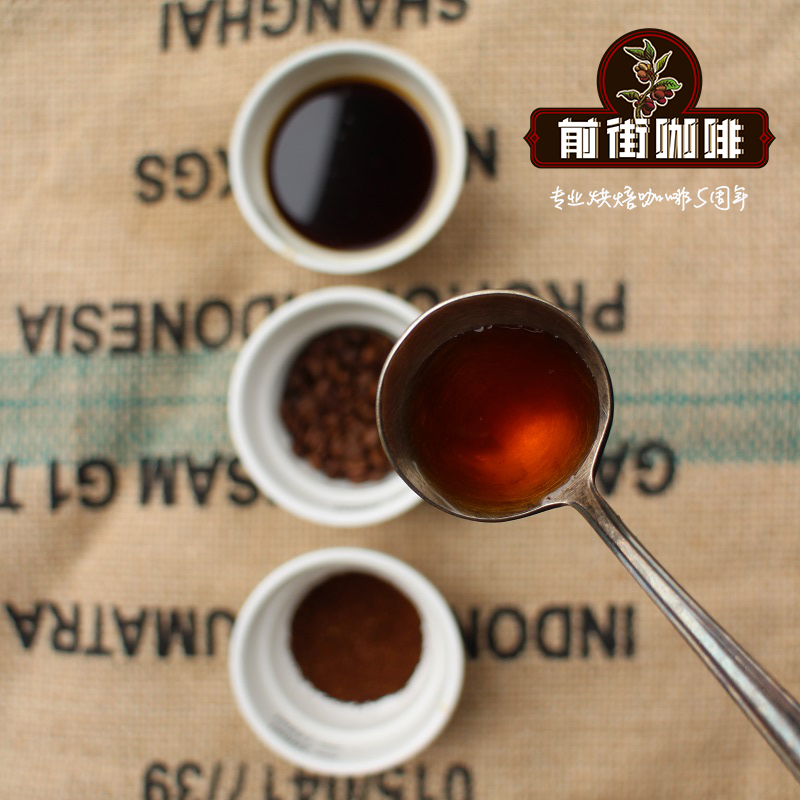The history of the development of mocha pot how to use mocha pot to make coffee can mocha pot make espresso

The product of Italian coffee culture
The mocha pot was invented in Italy and is a natural development of the coffee industry in that country.
Coffee was first introduced to Italy in the 16th century as an exotic and expensive luxury. As a result, it is mainly spent by wealthy Italians in commercial cafes. These companies use hot dipping to prepare and serve coffee in coffee pots.
Growing demand has prompted innovators to look for ways to make coffee more effectively. Through the experiment of steam pressure brewing, the first espresso machine was patented and was put on the market in 1884. This new method greatly shortens the extraction time, so that fresh coffee can be supplied quickly or "quickly".
An example of pressurized infiltration is an espresso machine that works by boiling water under pressure to force steam through fine coffee beans. This will produce a rich flavor concentrate that is suitable for quick consumption.
Because of the large size of these early espresso machines, they are only suitable for commercial use. In an American bar, customers order a cup of coffee when they stand at the counter. In a growing industrial society, this fast service is ideal for workers who need to drink coffee anytime, anywhere-a tradition that continues to this day.
The arrival of MOKA EXPRESS
The arrival of the 1950s brought economic prosperity to Italy, accelerated consumerism, and increased the comfort and area of Italian houses. At this point, the popularity of coffee has indeed begun to rise, which requires people to recreate the efficiency (and results) of commercial espresso machines at home.
Enter Alfonso Bialetti. Although he invented the mocha pot in 1933, it benefited a lot from the country's economic upturn a few years later. Moka Express (the octagonal aluminum stove brewer we use today) is famous for making coffee at home in a cheap and efficient way. Named after the city of Mocha, it was a major port for Yemeni coffee exports to Europe until the early 18th century.
The mocha pot specially designed for use on the stove consists of three main parts. Like an espresso machine, it causes boiling water to flow through coffee powder after being pressurized by steam. Steam is produced in the boiler. The pressure builds up until the water is forced into the top chamber through the funnel and coffee powder. A similar splashing sound will be made when the boiler is almost empty to let you know that the coffee is ready.
Although the moka pot does not produce coffee fat, it does produce coffee similar to espresso and has made an important contribution to the rise of espresso culture.
MOKA POT conquers the world
By the 1950s, Bialetti had become one of the leading coffee maker manufacturers in Italy and began to enter foreign markets. By the end of the 20th century, sales had reached about 220 million.
To some extent, its fate is closely related to the spread of espresso culture abroad-competitive espresso machines have also contributed. It was also influenced by manufacturing innovations in the 20th century, such as the advent of aluminum on an industrial scale. Italian communities around the world have also played a role in popularizing Italian coffee.
As in Italy, coffee has grown from luxury to affordable goods in other countries. However, consumption habits in emerging markets have evolved on their own. In the United States and Britain, for example, the addition of milk to produce coffee lattes and cappuccinos is still more common than in Italy.
Current imports and exports reflect demand for Robusta mixtures that meet the needs of the espresso industry that mocha pots help build.
Italy is the second largest importer of raw coffee beans in Europe and the second largest exporter of roasted coffee on the continent, which helps to create "important demand", according to a report by the Dutch Centre for Import Promotion. For coffee producers around the world, especially those that can meet the requirements of the espresso industry. "
At the consumer level, similar changes have taken place in the market. Although sales of instant coffee fell by 3% in 2015, sales of high-end filtered coffee used to make espresso, cappuccino or filtered coffee have increased in recent years.
To be sure, the mocha pot played a role in these sales figures, not explicitly. It helps to spread espresso culture around the world, thus prompting people to buy coffee in a form suitable for making espresso. But there are many other factors at play.
What about other household cooking methods?
The threat to the mocha pot is not limited to espresso machines, but is now in danger of becoming a victim of its success. In order to help popularize the home brewing culture, it paves the way for new methods and equipment that enjoy a high reputation in the specialty coffee culture.
With the arrival of the third wave of coffee, many coffee lovers begin to favor other coffee machines that can produce real espresso quickly and efficiently without producing burnt flavor. By making more choices than ever before, people can find better results and a wider range of experiments.
There are many different brewing methods to try (dumping, immersion, dripping, etc.), as well as more and more competitive devices available. By playing with variables, consumers can use different devices to extract different qualities from coffee beans.
As a result, mocha pots cannot benefit from increased interest in artisanal home brewing. Its decline puts Bialetti at risk of extinction. The company declared bankruptcy in October 2018 with a total accrued debt of $3165,680. But it can still be saved from large amounts of loans from American hedge funds.
Important Notice :
前街咖啡 FrontStreet Coffee has moved to new addredd:
FrontStreet Coffee Address: 315,Donghua East Road,GuangZhou
Tel:020 38364473
- Prev

The Story of hand-made Coffee Universal filter Cup V60 History how to make coffee with V60 filter cup
The story of Hario, the designer of the V60 filter cup, combines chemistry, glassware and coffee. In fact, if you have read the Chemex History and Brewing Guide, you may remember that it was designed by chemists. Hario was founded in Tokyo in 1921 to produce and sell physical and chemical glass products. After nearly 30 years of research, they are born
- Next

How to clean semi-automatic espresso machine maintenance course
Different coffee machines have different time limits, and the life of the espresso machine is about 8 to 10 years. When you carefully clean and maintain it daily, no matter how busy your coffee shop is every day, it will make a good espresso for you. Highlight: it's too important to effectively clean your coffee maker! 1. Timely cleaning is a barista or coffee from
Related
- Beginners will see the "Coffee pull flower" guide!
- What is the difference between ice blog purified milk and ordinary milk coffee?
- Why is the Philippines the largest producer of crops in Liberia?
- For coffee extraction, should the fine powder be retained?
- How does extracted espresso fill pressed powder? How much strength does it take to press the powder?
- How to make jasmine cold extract coffee? Is the jasmine + latte good?
- Will this little toy really make the coffee taste better? How does Lily Drip affect coffee extraction?
- Will the action of slapping the filter cup also affect coffee extraction?
- What's the difference between powder-to-water ratio and powder-to-liquid ratio?
- What is the Ethiopian local species? What does it have to do with Heirloom native species?

